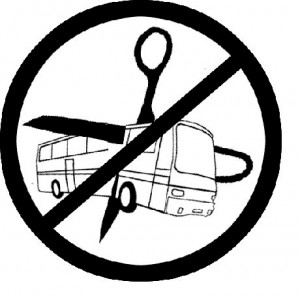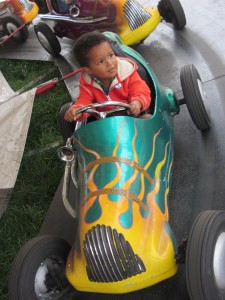Back in the Before Times (aka, two months ago), when I actually went places, I would sometimes rent a Zipcar for the day, usually to visit family and friends who live outside of reasonable busing distance. Of course, when it comes to buses, I’m not above pushing past what is reasonable, but other obligations and service limitations do occasionally constrain my ability to spend an entire day traveling 23 miles.
I digress.
On those Zipcar days, every time I found myself driving near a bus or rolling past a full bus stop, I would feel a pang, even a bit of FOMO. Seeing a bus when I’m not riding hurts my bus chick heart.
This is how I feel every day now when I go outside—usually to walk in circles around my neighborhood—and I see 3s and 4s and 8s and 27s and 48s rolling by, often completely empty. Except these days, it’s not a just a brief pang. It’s an ache, a cracking open, an interior crumbling.
It’s grief.
As a naturally anxious person who has lived through many of Metro’s ups and downs, I have rehearsed a fair number of transit disaster scenarios in my head. But never, not even in my worst anxiety spirals, did I imagine the current reality: that the bus would become a vector of a global pandemic, that anyone with the option to stay home would be asked not to ride, that loving your community would mean not riding the bus.
How can I explain what the bus means to me? I have been writing this blog for 14 years and still have not managed to put it into words.
The bus is my stability, my comfort, my assurance that the world is as it should be. It is my opportunity to be with other people I would otherwise never have the chance to meet.
On the bus, I am invisible but also seen, alone but in community, moving but sitting still.
I can participate in conversations or (my specialty) observe from the periphery, absorbing, empathizing, integrating all of it. Or I can tune it all out and look out the window to watch the world.
When I am on the bus, I know that I belong. To my city. To humanity. To the ancestors.
I know that this is bigger than my personal loss. Drivers are risking their lives to transport people who must travel. Major service cuts are limiting those people’s access to food and jobs and medical care. The economic crash caused by this disaster will make it near impossible for Metro to restore service when it’s finally safe to ride again.
But the thing about the bus is that it is both personal and collective. My loss is the community’s, and the community’s loss is mine.
And right now, it feels like a cyclone has hit, and we’ll never get back home.




